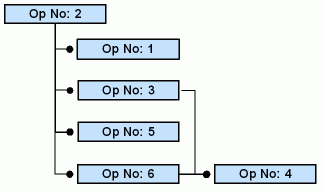
Define standard jobs for the type of tasks that will be executed often or repeatedly, or that requires that a certain standard is followed with regard to what type of craft should be used, what material is required, what type of tool and facility that is required, and what document should be accessible etc.
You can enter work instructions and material requirements and connect documents to both Separate and Route Standard Jobs. In addition, you can enter the following on the Separate Standard Job: operation requirements, tools and facilities requirements, and other expenses related to the task. For both types of standard jobs you can define how all the expenses should be invoiced to the customer (Relevant to IFS/Service Management only).
An active Separate Standard Job can be applied to Separate PM actions, Separate Work Orders and Service Requests. An active Route Standard Job can be applied to Route PM actions and Route Work Orders.
For separate work orders that have a series of operations, manual rescheduling can be cumbersome. To make the job easier and efficient, you can connect the operation lines to form a hierarchical structure, that is a Predecessor - Successor (i.e., Parent - Child) relationship. The structure can also be included in the Separate Standard Job which will be inherited by the PM action when it is generated and by the work order when it is connected.
Consider the following example: A separate standard job has six operations connected as shown below.

Op No: <x> = Operation Number <x>
Thus, the predecessors for each operation number is as follows:
| Operation Number | Predecessor |
| Operation No: 1 | 2 |
| Operation No: 2 | None |
| Operation No: 3 | 2 |
| Operation No: 4 | 3,6 |
| Operation No: 5 | 2 |
| Operation No: 6 | 2 |
Note: You cannot delete operation lines that act as predecessors. For instance, in the above example, operation numbers: 2, 3, and 6 cannot be deleted. You will have to remove the dependency in order to delete the operation lines. Furthermore, you cannot create relationships that loop. For example, operation no: 1 cannot be included as the predecessor of operation no: 2. To do so, you will have to remove the dependency and re-define it. Also, you cannot include operation no: 4 as a predecessor to operation no: 2 , since operation no: 2 is an indirect predecessor of operation no: 4.